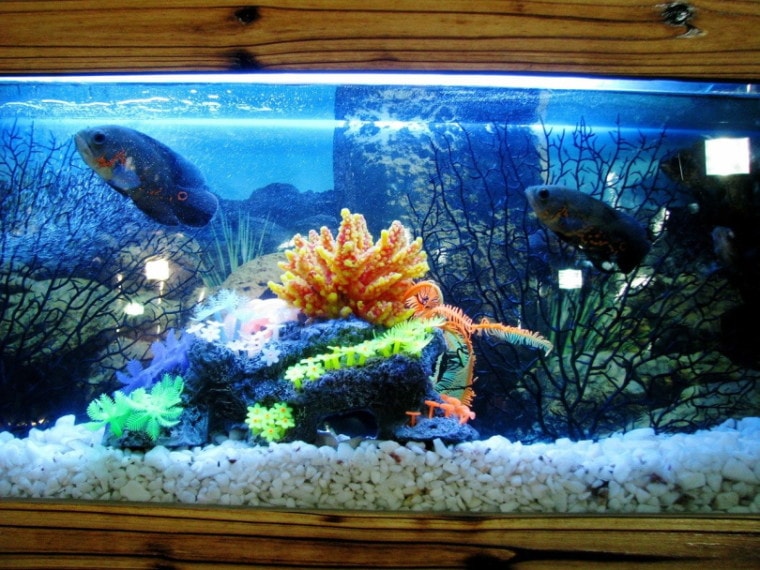
Click to Skip Ahead
Beginners often learn about New Tank Syndrome the hard way. They set up their tanks and fill them with fish, only to find the fish gulping for air at the surface. Unfortunately, many new hobbyists don’t recognize gulping as a call for help, and their fish often end up getting lethargic, and at times, perishing within a few hours or days of being purchased.
Having an aquarium isn’t simply a matter of adding water and fish. It’s essential to remember that you’re recreating a micro-habitat that involves several non-visible elements.
The Nitrogen Cycle
The nitrogen cycle is a naturally occurring process in which nitrogen is converted into different chemical forms. Before cycling your aquarium, you might be curious as to why it is necessary.
Ammonia (NH3) is a compound that contains nitrogen, denoted by the “N” in its chemical formula. Ammonia is very toxic for aquatic organisms (plants, fish, and aquatic invertebrates). The tolerance of ammonia varies by species of fish you keep, but it is fair to say that ammonia is toxic for any pet fish you plan to keep.
Interestingly, ammonia is also produced by fish as a byproduct of their regular metabolism. In nature, this isn’t much of an issue. Fish live in wide open spaces where toxins are heavily diluted. Rainfalls and melting snowcaps constantly replenish their water supplies, and fish have the opportunity to swim to better waters if needed. Many plants also utilize sources of nitrogen as fertilizer. Most importantly, the soil contains trillions of naturally occurring nitrifying bacteria which are able to process ammonia and neutralize it.

The neutralization of ammonia is relatively simple. Beneficial bacteria convert ammonia into nitrite. Nitrite is also toxic for fish and aquatic life. However, the bacteria then convert nitrite to nitrates. Nitrates are relatively safe for fish.
In nature, this cycle perpetually repeats itself (the nitrates are further processed into nitrogen, the most common gas found in air, and so on).
Defining New Tank Syndrome
For a fishkeeper, the situation is somewhat different than what happens in nature. The conundrum is as follows:
This scenario often results in disaster and the rapid loss of pet fish via ammonia or nitrite poisoning. Because this happens in new aquariums, it is also known as New Tank Syndrome.
Causes
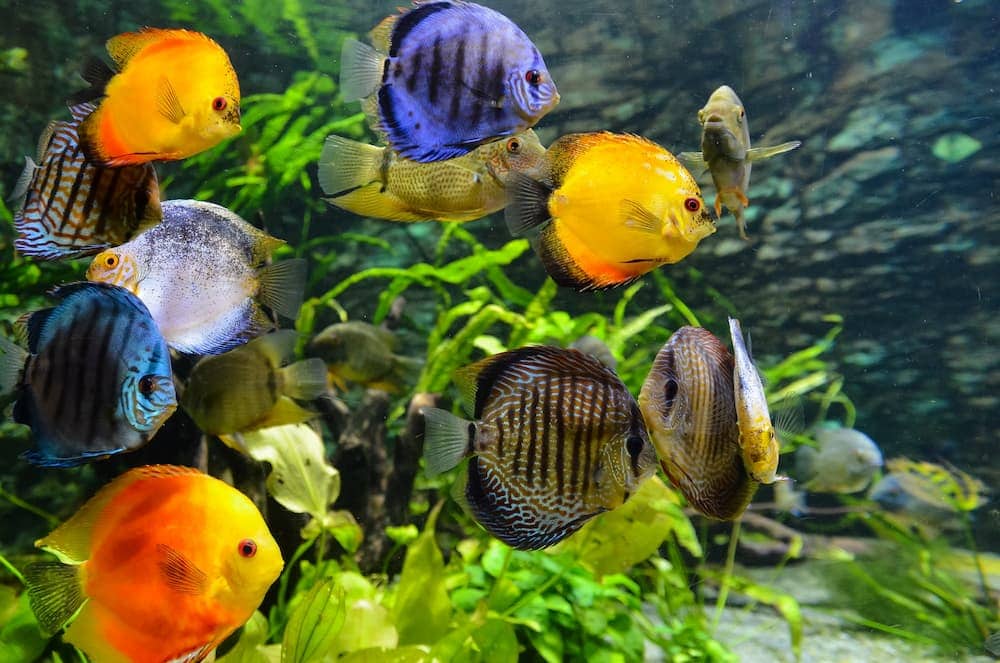
Signs
Ammonia poisoning produces many drastic signs in fish, and ammonia affects almost every aspect of your fish’s normal metabolism. Signs you might observe include:
If you notice these signs in a new aquatic environment, it’s fairly easy to conclude that you’re dealing with New Tank Syndrome. A confirmation can be done by testing your water for ammonia. Any level over 0 ppm (parts per million) or 0 mg/L (milligrams per liter) is considered unsafe for your fish.

Treatment
Ammonia poisoning should be considered an emergency. Prompt intervention improves the likelihood of your fish surviving, however, losses are sometimes sudden, and at times, recovery isn’t entirely possible.
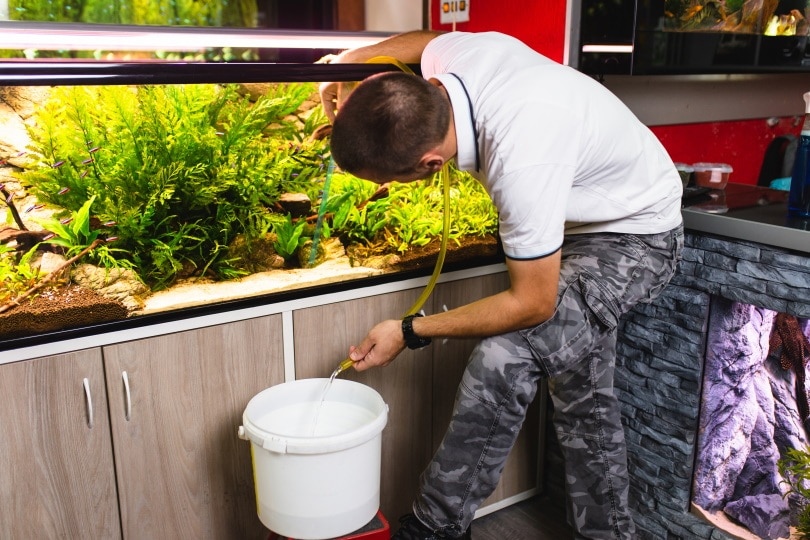
Prevention
The fix for New Tank Syndrome involves water changes and treatment solutions tha,t unfortunately, can cause even more stress for your fish, and perhaps, their early demise. Therefore, prevention is infinitely better than the cure. Fortunately, there are several things that you can do to prevent it from occurring.
Cycle Your Aquarium
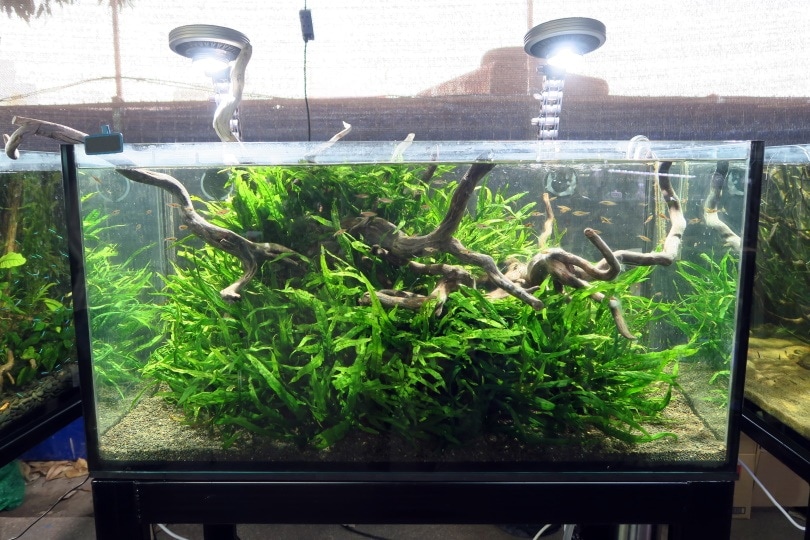
The most critical sequence in a tank’s water chemistry is the nitrogen cycle—the process of waste products being converted to harmless compounds that other organisms can use and eliminate from the water. Beneficial nitrifying bacteria make it possible. The essential element is biological filtration.
Its purpose is to provide the space for the bacteria to develop and do their job. It can do it most efficiently when it has a large amount of surface area. Each compound in the nitrogen cycle provides the fodder for the next stage. It’s the same process that occurs in any body of water. The difference with your tank is that you’re starting from scratch.
Maintain Optimal Filtration
There are three main types of filtration. Ideally, your tank will have at least two but preferably, all three.
Biological filtration is the key element. The second type of filtration is mechanical filtration. It is the process of physically moving floating waste and debris from the water.
The third type is chemical filtration. Activated charcoal is a popular part of these systems because the can clear cloudy water while removing odors and toxins. Often, filters will combine all three to create the optimal environment for your fish. Your filter should be able to process anywhere from 5 to 7 times your tank’s volume in an hour. In addition, regular maintenance is important for your fish’s health.
Maintain Water Quality
Filtration alone isn’t enough to maintain water quality. Weekly partial water changes and water quality tests should be done to ensure your aquarium’s parameters are within normal limits. Never let uneaten food rot in an aquarium, as this can cause an ammonia spike. Remove waste with a gravel vacuum.
You should always be able to find these readings in a properly established aquarium:
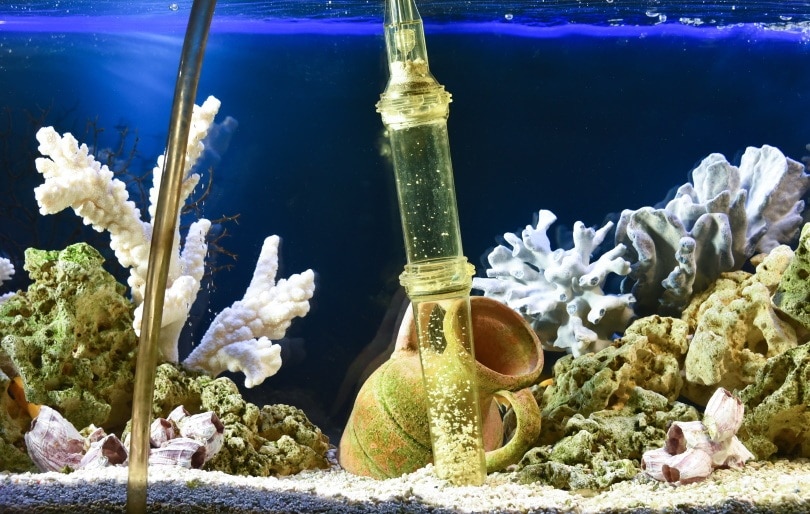
Final Thoughts
New Tank Syndrome almost seems like a rite of passage when you first get into having an aquarium. However, with proper planning and running a fishless cycle in your aquarium, you can establish an aquarium with a healthy environment for your aquatic pets.
In the unfortunate event that you think your fish are suffering from New Tank Syndrome, prompt intervention is necessary to ensure their survival. Please be mindful that, because ammonia is very toxic for fish, you cannot rely on a treatment protocol to guarantee their safety or recovery, and prevention of New Tank Syndrome is much easier than treatment.
- See also: Can You Shave a Cat? Risks & Precautions
Featured Image Credit: PDPics, Pixabay









